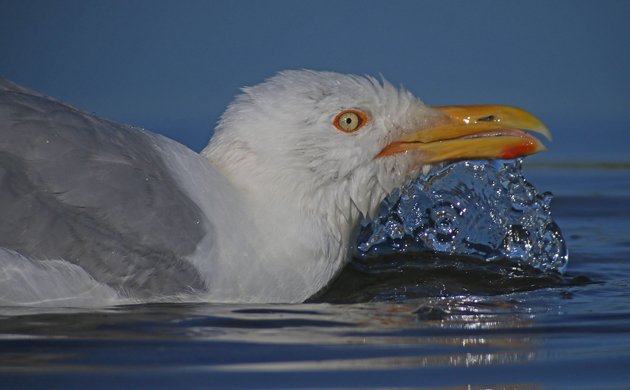Continuing with my theme of common birds who were, in a sense, my companions throughout this trip, I would now like to turn my attention to the Motacilla — literally, “moving tails” — aka wagtails. Even if you’ve never seen one, you can probably guess one of the instantly-notable behavioral traits of this group. In fact, wagtails do not so much wag their tails as bob their butts, but bobbutts would be a really weird name for a family of birds. (Maybe no weirder than goatsuckers, though.)
White Wagtails, of the pied variety, became my favorite European songbirds on my very first trip across the Atlantic as an adult. Their eye-catching plumage, confiding ways, and comfort in urban/ park habitat led to me noticing them at once, and once I noticed them, I was smitten. Those of you who read last week’s entry may be noting a theme here.
White Wagtails appeared a-plenty on my trek across Spain, from the days in Madrid before the trip began in earnest to my final moments in the Barcelona airport, where I looked out a window and noticed one waggling on the pavement of the outdoor smoking area. It is honestly surprising to me that these birds are not as storied and celebrated as the White Storks I mentioned previously, or at least (since admittedly their small size would make it very hard for White Wagtails to carry infants) the European Robin.
On the other hand, like all birders I crave novelty, so when I crossed a small river at the end of an exhausting day of hiking and noticed a new and different kind of wagtail, weariness gave way to excitement. Fortunately for me, and now for you, the albergue* where my companions and I planned to stay the night was located alongside this very river, in a refurbished 15th-century building that had served pilgrims from its inception.
A great many pilgrims had decided to take advantage of the beautiful day and relax in the sun or soak their feet in the cold, shallow water, but the new wagtail cared not a bit about that, flycatching and even strutting around right on the bridge where more walkers continually trudged by. A bit of observation revealed that there were two individual birds; both were gray and black about, yellow and white below, but one – the male, it would emerge – also had a distinct and striking black throat. They were, of course, Grey Wagtails, in their typical habitat.
I was able to watch them not only through the afternoon, as they continued to ignore the humans and cows hanging around what was obviously THEIR bridge, but well into the evening. They may be less famous than some other birds I encountered, but this had hurt their self-confidence not a bit.
*Albergues are inexpensive hostels reserved exclusively for the use of pilgrims along the Camino. They can be hit or miss, but to its credit the Galician government runs a very well-organized and clean chain of them in its jurisdiction.
White Wagtail photo courtesy of Wikimedia Commons. Grey Wagtail by me; you can tell because it is bad.






 New writers welcome – please contact us for details.
New writers welcome – please contact us for details.

















I like the story you told. You certainly do appreciate birds when you travel.
Hi,
what a fantastic post – I especially love the picture of the wagtail clutching its dinner in its bill. I’ve seen wagtails in various places in the Middle East and always found them to be fascinating birds, constantly in motion. Your site looks great – I recently started a natural history site of my own called New England Nature Notes, which might be of interest to you. You can check it out at:
http://www.newenglandnaturenotes.blogspot.com
Let me know what you think – I do write about topics beyond New England, and I’m always looking out for interesting topics and interview subjects, so if you’re interested, please feel free to drop me a line at newenglandnaturenotes@gmail.com
Thanks,
Daniel E. Levenson
Editor
New England Nature Notes
Thanks for this lovely post on one of my favourite bird groups. Bobbutts. Hmmmm … bobbuttsbobbuttsbobbutts. You know, that ain’t a bad idea at all!
Great birds and a great post, Carrie. What do you mean by “of the pied variety”? Are Spanish Birds not of the nominate race?
Good weekend–
Isn’t the American Pipet also known as a wagtail?
I love wagtails, great birds. I have many opportunities to observe them, in fact in the place I work, there are ca 20-30 wagtails, mainly motacilla alba, but also – from time to time – I hit yellow ones. I have only few almost-good (but not good enough, hehe) photos: http://oczywoczy.wordpress.com/2012/05/03/048_pliszka/